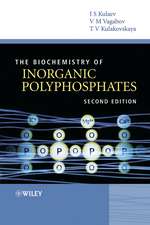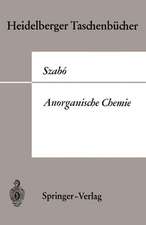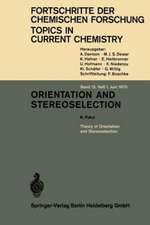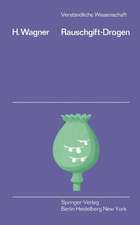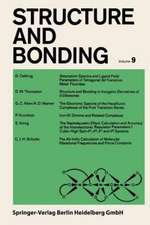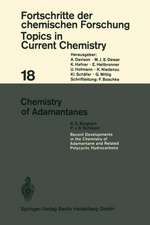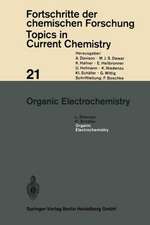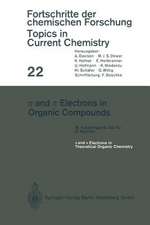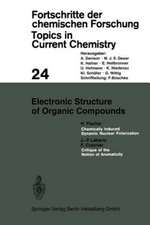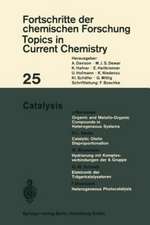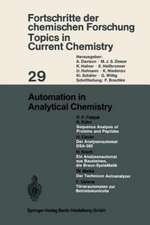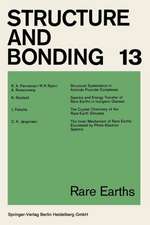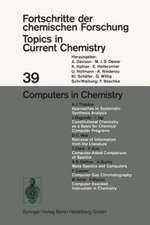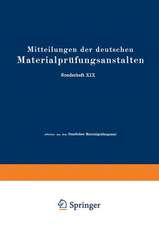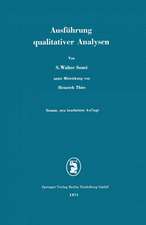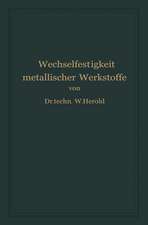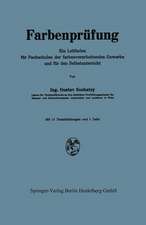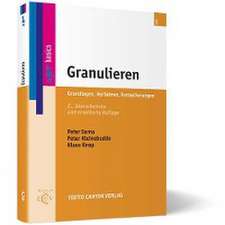Continuous Manufacturing of Pharmaceuticals
Autor P Kleinebuddeen Limba Engleză Hardback – 7 sep 2017
Preț: 1197.84 lei
Preț vechi: 1316.31 lei
-9% Nou
Puncte Express: 1797
Preț estimativ în valută:
229.21€ • 245.10$ • 191.11£
229.21€ • 245.10$ • 191.11£
Carte tipărită la comandă
Livrare economică 17 aprilie-01 mai
Preluare comenzi: 021 569.72.76
Specificații
ISBN-13: 9781119001324
ISBN-10: 1119001323
Pagini: 620
Dimensiuni: 170 x 244 x 37 mm
Greutate: 1.13 kg
Editura: Wiley
Locul publicării:Chichester, United Kingdom
ISBN-10: 1119001323
Pagini: 620
Dimensiuni: 170 x 244 x 37 mm
Greutate: 1.13 kg
Editura: Wiley
Locul publicării:Chichester, United Kingdom
Public țintă
Researchers in industry and academia working on pharmaceutical development and manufacturing.Cuprins
About the Editors xvii List of Contributors xix Series Preface xxv Preface xxvii 1 Continuous Manufacturing: Definitions and Engineering Principles 1 Johannes Khinast and Massimo Bresciani 1.1 Introduction 1 1.1.1 Definition of Continuous Manufacturing 1 1.1.2 Continuous Manufacturing in the Pharmaceutical Industry 2 1.1.3 Our View of Continuous Manufacturing 3 1.1.4 Regulatory Environment 8 1.2 Advantages of Continuous Manufacturing 8 1.2.1 Flexibility 8 1.2.2 Effect on the Supply Chain 8 1.2.3 Agility and Reduced Scale-up Efforts 9 1.2.4 Real-Time Quality Assurance and Better Engineered Systems 9 1.2.5 Decentralized Manufacturing 10 1.2.6 Individualized Manufacturing 10 1.2.7 Reduced Floor Space and Investment Costs 10 1.2.8 More Efficient Chemistries 10 1.2.9 Societal Benefits 11 1.3 Engineering Principles of Continuous Manufacturing 11 1.3.1 Pharmaceutical Unit Operations 11 1.3.2 Fundamentals of Process Modeling 15 1.3.3 Balance Equations for Mass, Species, Energy and Momentum 16 1.3.4 Residence Time Distribution 20 1.3.5 Classical Reactor Types as a Basis for Process Understanding 21 1.3.6 Process Control, Modeling and PAT 24 1.3.7 Scale-Up 26 1.3.8 Dimensioning 27 1.4 Conclusion 28 References 30 2 Process Simulation and Control for Continuous Pharmaceutical Manufacturing of Solid Drug Products 33 Marianthi Ierapetritou, M. Sebastian Escotet-Espinoza and Ravendra Singh 2.1 Introduction 33 2.1.1 Scope and Motivation 33 2.1.2 Process Simulation 34 2.1.3 Process Control 36 2.2 Pharmaceutical Solid Dosage Manufacturing Processes 38 2.2.1 Overview 38 2.2.2 Continuous Manufacturing Processes 38 2.2.3 Continuous Process Equipment 39 2.3 Mathematical Modeling Approaches 44 2.3.1 First Principle "Mechanistic" Models 44 2.3.2 Multi-dimensional Population Balance Models 44 2.3.3 Engineering or Phenomenological Models 46 2.3.4 Empirical and Reduced Order Models 47 2.4 Unit Operations Models 48 2.4.1 Feeders 48 2.4.2 Blenders (Mixers) 56 2.4.3 Tablet Press 63 2.4.4 Roller Compactor 67 2.4.5 Wet Granulation 71 2.4.6 Drying 75 2.4.7 Milling/Co-milling 76 2.4.8 Flowsheet Modeling 77 2.5 Process Control of Continuous Solid-based Drug Manufacturing 81 2.5.1 Process Control Basics 83 2.5.2 Control Design of Continuous Pharmaceutical Manufacturing Process 84 2.6 Summary 93 Acknowledgments 94 References 94 3 Regulatory and Quality Considerations for Continuous Manufacturing 107 Gretchen Allison, Yanxi Tan Cain, Charles Cooney, Tom Garcia, Tara GooenBizjak, Oyvind Holte, Nirdosh Jagota, Bekki Komas, Evdokia Korakianiti,Dora Kourti, Rapti Madurawe, Elaine Morefield, Frank Montgomery, MohebNasr, William Randolph, Jean-Louis Robert, Dave Rudd and Diane Zezza 3.1 Introduction 108 3.2 Current Regulatory Environment 108 3.3 Existing Relevant Regulations, Guidelines, and Standards Supporting Continuous Manufacturing 108 3.3.1 ICH Guidelines 108 3.3.2 United States Food and Drug Administration Guidances 109 3.3.3 US FDA Guidance on Process Validation 109 3.3.4 American Society for Testing and Materials Standards 109 3.3.5 European Union Guidelines 110 3.4 Regulatory Considerations 110 3.4.1 Development Considerations for Continuous Manufacturing 111 3.4.2 Special Considerations for Control Strategy in Continuous Manufacturing 112 3.4.3 Stability Considerations for Continuous Manufacturing 114 3.5 Quality/GMP Considerations 115 3.5.1 Pharmaceutical Quality Systems 115 3.5.2 Batch Release 115 3.5.3 Startup and Shutdown Procedures 116 3.5.4 State of Control: Product Collection and In-process Sampling 117 3.5.5 Process Validation and CPV 117 3.5.6 Material Traceability in Continuous Manufacturing 119 3.5.7 Handling of Raw Material and In-process Material 119 3.5.8 Detection and Treatment for Non-conformity 119 3.5.9 Personnel Procedures and Training 120 3.5.10 Material Carry-over 120 3.5.11 Material Diversion 120 3.5.12 Production Floor Product Monitoring 121 3.5.13 Raw Material Variability 121 3.5.14 Cleaning Validation 121 3.5.15 Equipment Failure 122 3.6 Quality Considerations for Bridging Existing Batch Manufacturing to Continuous Manufacturing 122 3.6.1 Physicochemical Equivalence Considerations 123 3.6.2 Bioequivalence Considerations 123 3.7 Glossary and Definitions 123 3.7.1 Batch Definition 123 3.7.2 21CFR 210.3 124 3.7.3 CFR 211 124 3.7.4 ICH Q7 124 3.7.5 ICH Q10 124 3.8 General Regulatory References 124 3.8.1 cGMP Guidance 125 4 Continuous Manufacturing of Active Pharmaceutical Ingredients via Flow Technology 127 Svetlana Borukhova and Volker Hessel 4.1 Introduction 127 4.2 Micro Flow Technology 128 4.2.1 Micromixing 129 4.2.2 Flow Reactors 130 4.2.3 Reaction Activation Tools 130 4.2.4 Downstream Processing 139 4.2.5 Process Analytical Technology and Automation 142 4.3 Multi-step Synthesis of Active Pharmaceutical Ingredients in Micro Flow 150 4.3.1 Aliskiren 151 4.3.2 Artemisinin 151 4.3.3 Ibuprofen 153 4.3.4 Gleevec 154 4.3.5 Nabumetone 155 4.3.6 Quinolone Derivative as a Potent 5HT1B Antagonist 155 4.3.7 Rufinamide 155 4.3.8 Thioquinazolinone 156 4.4 Larger-scale Syntheses 156 4.4.1 Hydroxypyrrolotriazine (Bristol-Myers-Squibb) 156 4.4.2 2,2-Dimethylchromenes (Bristol-Myers-Squibb) 156 4.4.3 Fused-Bycyclic Isoxazolidines (Eli Lilly and Company) 158 4.4.4 7-Ethyltryptophol on the Way to Etodolac 158 4.4.5 6-Hydroxybuspirone (Bristol-Myers-Squibb) 159 4.5 Current Industrial Applications 160 4.6 Conclusion and Outlook 161 References 162 5 Continuous Crystallisation 169 Cameron Brown, Thomas McGlone and Alastair Florence 5.1 Introduction 169 5.2 Principles of Crystallisation 173 5.2.1 Supersaturation 173 5.2.2 Nucleation and Growth 176 5.2.3 Conservation Equations 180 5.3 Crystallisation Process Development 180 5.4 Continuous Crystallisers and Applications 185 5.4.1 Mixed Suspension Mixed Product Removal 186 5.4.2 MSMPR Cascade 193 5.4.3 Plug Flow Reactors 198 5.4.4 Impinging Jet 206 5.4.5 Microfluidics 207 5.5 Process Monitoring, Analysis and Control 207 5.5.1 Process Monitoring and Analysis 207 5.5.2 Crystallisation Control Strategies 211 5.6 Particle Characterisation 213 5.7 Concluding Remarks 215 References 217 6 Continuous Fermentation for Biopharmaceuticals? 227 L. Mears, H. Feldman, F.C. Falco, C. Bach, M. Wu, A. Nørregaard and K.V. Gernaey 6.1 Introduction 227 6.1.1 Definition of Fermentation 227 6.1.2 Production of Biopharmaceuticals 228 6.1.3 Structure of Chapter 228 6.2 Operation of Fermentation Systems 229 6.2.1 Comparison of Different Cultivation Systems 229 6.2.2 Monitoring of Continuous Fermentation Processes 232 6.2.3 Control of Continuous Fermentation Processes 234 6.3 Continuous Fermentation Examples 238 6.3.1 Continuous Ethanol Fermentation 238 6.3.2 Continuous Lactic Acid Fermentation 239 6.3.3 Single Cell Protein Production 240 6.4 Discussion 241 6.5 Conclusions 243 References 244 7 Integrated Continuous Manufacturing of Biopharmaceuticals 247 Alois Jungbauer and Nikolaus Hammerschmidt 7.1 Background 247 7.1.1 Current Status of Manufacturing of Biopharmaceuticals 247 7.1.2 Challenges to Developing Continuous Processes 249 7.1.3 Rationale for Continuous Biomanufacturing 250 7.2 Continuous Upstream Processing 251 7.2.1 Cell Lines and Cell Line Stability 251 7.2.2 Perfusion Reactor 252 7.2.3 Cell Retention Devices 252 7.2.4 Chemostat and Turbidostat 254 7.2.5 Overview of Products Produced by Continuous Upstream Processing 254 7.3 Continuous Downstream Processing 257 7.3.1 Overview of Unit Operations 257 7.3.2 Continuous Centrifuges 257 7.3.3 Continuous Filtration 258 7.3.4 Continuous Chromatography 260 7.3.5 Continuous Precipitation 263 7.3.6 Continuous Formulation 266 7.4 Process Integration and Single Use Technology 266 7.4.1 Disposable Bioreactors 268 7.4.2 Disposable Unit Operations in Downstream Processing 268 7.4.3 Full Process Train 270 7.5 Process Monitoring and Control 270 7.6 Process Economics of Continuous Manufacturing 274 7.7 Conclusions 275 Acknowledgments 276 References 276 8 Twin-screw Granulation Process Development: Present Approaches, Understanding and Needs 283 A. Kumar, K.V. Gernaey, I. Nopens and T. De Beer 8.1 Introduction 283 8.2 Continuous Wet-granulation using a TSG 284 8.3 Components of High Shear Wet Granulation in a TSG 287 8.4 Material Transport and Mixing in a TSG 287 8.4.1 Granulation Time in a TSG 288 8.4.2 Mixing in a TSG 291 8.5 Granule Size Evolution During Twin-screw Granulation 294 8.5.1 Granule Size and Shape Dynamics in a TSG 295 8.5.2 Link Between RTD, Liquid Distribution and GSD in a TSG 295 8.6 Model-based Analysis of Twin-screw Granulation 298 8.6.1 Modelling RTD in a TSG 298 8.6.2 Tracking GSD in a TSG using PBM 300 8.7 Towards Generic Twin-screw Granulation Knowledge 302 8.7.1 Regime Map Approach 303 8.7.2 Particle-scale Simulation using DEM 305 8.8 Strengths and Limitations of the Current Approaches in TSG Studies 307 8.9 Glossary 308 References 309 9 Continuous Line Roller Compaction 313 Ossi Korhonen 9.1 Roller Compaction 313 9.2 Main Components of a Roller Compactor 313 9.3 Theory of Powder Densification in Roller Compaction 315 9.4 Johanson Model 317 9.5 Modified Johanson Model 319 9.6 Experimental Observations of Pressure Distribution from Instrumented Roller Compactors 322 9.7 Off-line Characterization of Ribbon Quality 324 9.8 In-line Monitoring of Roller Compaction Process 326 9.9 Formulative Aspects of Roller Compaction 328 9.10 Roller Compaction as a Unit Operation in Continuous Manufacturing 330 9.11 Process Control of Continuous Roller Compaction 332 9.12 Conclusions 333 References 334 10 Continuous Melt Extrusion and Direct Pelletization 337 Stephan Laske, Theresa Hörmann, Andreas Witschnigg, Gerold Koscher, Patrick Wahl, Wen Kai Hsiao and Johannes Khinast 10.1 Introduction 337 10.2 The Extruder 338 10.3 Feeding 341 10.3.1 Solid Feeding 341 10.3.2 LIW Screw Feeders 342 10.4 Twin-screw Extrusion 345 10.4.1 Counter-rotating Twin-screw Extruder 346 10.4.2 Co-rotating Twin-screw Extruder 347 10.5 Operation Point 347 10.6 Downstream Processing 349 10.6.1 Direct Shaping of Final Product 350 10.6.2 Intermediate Products 352 10.7 Continuous Manufacturing with HME 356 10.7.1 Process Understanding 356 10.7.2 Control Strategy 356 10.7.3 State of Control 357 10.7.4 Diversion of Material 357 10.8 PAT for HME 360 10.8.1 Near-infrared Spectroscopy 360 10.8.2 Raman Spectroscopy 360 10.8.3 Chemical Imaging 361 10.8.4 Particle Size Analysis 361 10.8.5 Optical Coherence Tomography 361 10.8.6 Data Processing 362 10.9 Process Integration into Computerized Systems 362 10.9.1 IT Structure of Supervisory Control Systems 364 10.9.2 Real-time Release Testing 365 10.10 Conclusion 365 References 366 11 Continuous Processing in the Pharmaceutical Industry: Status and Perspective 369 Richard Steiner and Maik Jornitz 11.1 Industry Drivers for Continuous Processing: Competitive Advantages 369 11.2 Continuous Manufacturing in Bioprocessing 371 11.2.1 Continuous Bioprocessing Enablers and Guidance 371 11.2.2 Process Technologies 372 11.2.3 Examples of Continuous Manufacturing 376 11.2.4 Economic and Design Implications 377 11.3 Continuous Manufacturing for Oral Solid Dosage Forms 381 11.3.1 Industry Approaches to the Implementation of CM 381 11.3.2 Typical Installation Layouts 383 11.3.3 Economic Justification and Business Excellence 387 11.4 The Pharmaceutical Supply Chain of the Future 395 11.4.1 Portable, Continuous, Miniature and Modular 395 11.4.2 The PCMM Concept 396 11.4.3 Discussion 399 11.5 Conclusion 400 Acknowledgments 401 References 401 12 Design of an Integrated Continuous Manufacturing System 405 Sarang S. Oka, M. Sebastian Escotet-Espinoza, Ravendra Singh, James V.Scicolone, Douglas B. Hausner, Marianthi Ierapetritou and FernandoJ. Muzzio 12.1 Introduction 405 12.2 Step 1: Rough Conceptual Design 406 12.2.1 Type of Product 406 12.2.2 Type of Manufacturing Route - Direct Compaction, Wet Granulation or Dry Granulation 407 12.2.3 Flexible or Dedicated 408 12.2.4 Feeding Multiple Ingredients, Including Pre-blends 408 12.2.5 Strategy for Sensing and Control 409 12.2.6 Regulatory Strategy 409 12.3 Step 2: Material Property Screening 410 12.4 Step 3: Characterizing Unit Operation Using Actual Process Materials 412 12.4.1 Loss in Weight Feeders 412 12.4.2 Continuous Blenders 415 12.5 Step 4: Develop and Calibrate Unit Operation Models Including Process Materials 422 12.5.1 Application of the Model Development Algorithm in Pharmaceutical Problems 422 12.5.2 Recommendations for Developing a Unit Operation Model that Incorporates the Effects of Material Properties 423 12.6 Step 5: Develop an Integrated Model of an Open Loop System 424 12.6.1 Model Integration Basics 425 12.6.2 General Algorithm for Building an Integrated Model 425 12.7 Step 6: Examine Open Loop Performance of the Process 427 12.8 Step 7: Develop/Fine Tune PAT Methods for Appropriate Unit Operations 429 12.9 Step 8: Implement Open Loop Kit with PAT and IPCs Enabled 430 12.10 Step 9: Design of the Control Architecture 432 12.11 Step 10: Develop Integrated Model of Closed Loop System 436 12.12 Step 11: Implementation and Verification of the Control Framework 438 12.13 Step 12: Characterize and Verify Closed Performance 440 12.14 Conclusions 442 References 443 13 End to End Continuous Manufacturing: Integration of Unit Operations 447 R. Lakerveld, P. L. Heider, K. D. Jensen, R. D. Braatz, K. F. Jensen,A. S. Myerson, and B. L. Trout 13.1 Introduction 447 13.2 Process Description 448 13.2.1 Specific Benefits Obtained as a Result of CM 452 13.3 System Dynamics 452 13.3.1 Model-based Design and Control are the Governing Concepts in CM 452 13.3.2 The Absence of True Steady-state Operation and the Implications for Product Quality Control 453 13.3.3 Plant-wide Control for CM: Disentanglement of Times Scales and Control Objectives 455 13.3.4 Residence Time Distribution of a CM Process: Impact of Recycling 456 13.3.5 Disturbances, Nonlinearities, and Delays: Implications for Control 460 13.3.6 Startup and Shutdown Procedures 464 13.3.7 Buffering 465 13.4 Process Monitoring and Control 468 13.4.1 PAT Use in the Integrated Continuous Manufacturing Process 468 13.4.2 Soft Sensors and Prediction of Future Performance 469 13.5 Outlook: Opportunities for Novel Unit Operations and System Configurations 471 13.6 Summary and Closing Thoughts 477 References 480 14 Methodology for Economic and Technical Comparison of Continuous and Batch Processes to Enhance Early Stage Decision-making 485 Isabella Aigner, Wen-Kai Hsiao, Diana Dujmovic, Sven Stegemann and Johannes Khinast 14.1 Introduction 485 14.2 Technical-Economic Evaluation Methodology 486 14.2.1 Definition of the System Boundaries and Performance Targets 488 14.2.2 Modeling of the Process Chains 489 14.2.3 Performing Technical Feasibility and Risk Assessment 490 14.2.4 Evaluation of the Process Options 492 14.2.5 Calculation of Process Costs, Cost Comparison and Interpretation 498 14.2.6 Technology-Economic Profiling and Interpretation of Results 498 14.2.7 Performing Scenario, Sensitivity and Uncertainty Analysis 502 14.3 Conclusion 502 References 504 15 Drivers for a Change - Manufacturing of Future Medicines for Personalized Drug Therapies 507 Jukka Rantanen and Jörg Breitkreutz 15.1 Introduction 507 15.2 Personalized Medicine 508 15.2.1 Therapy Based on Individualized Needs for Different Patient Groups 508 15.2.2 Point of Care Diagnostics 509 15.3 Flexible Dosing with Innovative Products 510 15.4 Future Health Care Scenario 513 15.4.1 Enabling Manufacturing Technologies and Materials Science 513 15.4.2 The Regulatory Environment 518 15.4.3 Supply Chain 520 References 521 16 Perspectives of Printing Technologies in Continuous Drug Manufacturing 525 Niklas Sandler and Petri Ihalainen 16.1 Introduction 525 16.1.1 Printing Technologies - Enablers of Continuous Drug Manufacturing Approaches 525 16.2 Inkjet (Microdrop Generation Techniques) 527 16.2.1 Inkjet - Technical Description 527 16.2.2 Ink Development and Printability 531 16.2.3 Pharmaceutical Applications of Inkjet Printing 533 16.3 Flexographic Printing 535 16.3.1 Flexography - Technique Description 535 16.3.2 Pharmaceutical Applications of Flexographic Printing 537 16.4 Formulation Approaches for Inkjet and Flexography 538 16.5 Process Control and Process Analytical Technology for Continuous Printing Applications 539 16.6 From Laboratory-scale Printing Towards an Industrial Scale 540 16.7 Three-dimensional Printing/Additive Manufacturing 541 16.7.1 From Prototyping to Large-scale Manufacturing 542 16.7.2 Fused Deposition Modeling or Fused Filament Fabrication 543 16.7.3 Feedstock Material for FDM Printing 544 16.7.4 3D Printing Techniques used in the Biomedical and Pharmaceutical Area 545 References 546 17 Development of Liquid Dispensing Technology for the Manufacture of Low Dose Drug Products 551 Allan Clarke and Dave Doughty 17.1 Introduction 551 17.2 Background 552 17.3 Goals for the LDT Program 554 17.4 Overview of LDT 555 17.4.1 Formulation Overview 555 17.4.2 LDT Platforms 557 17.5 LDT Machine Design Details 559 17.5.1 Commercial Line Operation 559 17.5.2 Liquid Dispensing Cell 560 17.5.3 Solvent Evaporation 563 17.5.4 Inspection Systems on the Commercial Machine for Critical Quality Attributes 563 17.5.5 Pad Printing Cell 565 17.6 Scale-independence of the LDT Technology 566 17.7 Real-time Release Potential 567 17.8 Occupational Health, Environmental and Cleaning Considerations 570 17.8.1 Occupational Health 570 17.8.2 Environmental Controls/Cleaning 572 17.9 Conclusion 573 Acknowledgments 574 References 574 Index 577
Notă biografică
Editors Peter Kleinebudde is Professor for Pharmaceutical Technology at Heinrich-Heine-University Duesseldorf, Germany, and Vice-Dean of the Faculty of Mathematics and Natural Sciences. His main research area is development, production and characterization of solid dosage forms. Johannes Khinast is Professor of Chemical and Pharmaceutical Engineering and Head of the Institute of Process and Particle Engineering at the Graz University of Technology, Austria. Jukka Rantanen is Professor of Pharmaceutical Technology and Engineering at the Department of Pharmacy, University of Copenhagen, Denmark.
Descriere
A comprehensive look at existing technologies and processes for continuous manufacturing of pharmaceuticals As rising costs outpace new drug development, the pharmaceutical industry has come under intense pressure to improve the efficiency of its manufacturing processes. Continuous process manufacturing provides a proven solution.

